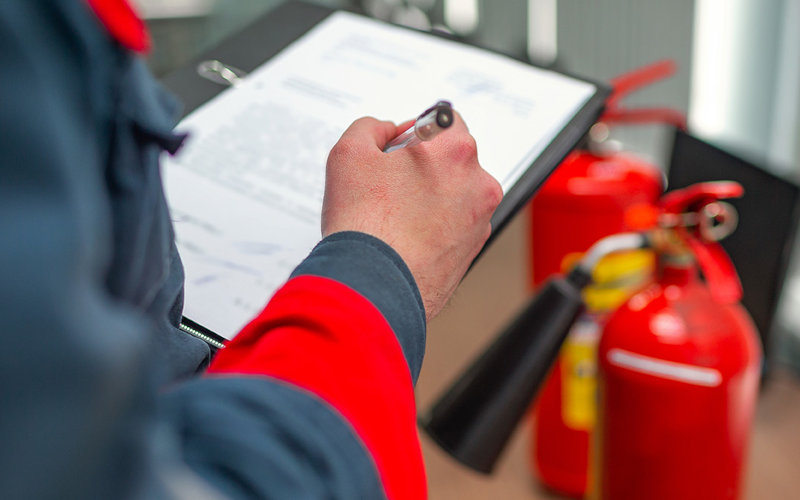The Australian Standard AS 3745: “Planning for emergencies in facilities” is a comprehensive guideline for preparing, managing, and responding to emergencies in various types of facilities. It establishes a framework to ensure the safety of occupants and visitors and outlines requirements for emergency planning and evacuation procedures.
Key Components of AS 3745
Emergency Planning Committee (EPC)
- Facilities must establish an EPC, responsible for developing and maintaining the emergency plan.
- The EPC oversees risk assessments, documentation, and compliance with the standard.
Emergency Plan
- A detailed document outlining the strategies, procedures, and responsibilities during an emergency.
- Includes information such as the roles of emergency personnel, communication protocols, and evacuation procedures.
Emergency Control Organisation (ECO)
- A group of trained personnel assigned to specific emergency roles, such as wardens and first aid officers.
- ECO members guide occupants during emergencies, ensuring a safe and orderly evacuation.
Emergency Procedures
- Step-by-step instructions for managing various types of emergencies, including fire, natural disasters, medical emergencies, and security incidents.
- Must be tailored to the specific risks and layout of the facility.
Evacuation Diagrams
- Required in facilities to visually communicate evacuation routes, emergency exits, assembly areas, fire equipment, and first aid stations.
- Diagrams must comply with strict design requirements, including symbols, colours, and content as per AS 3745.
Training and Education
- Regular training for the ECO and occupants to ensure everyone is aware of emergency procedures.
- Training must include evacuation drills, fire extinguisher use, and other relevant skills.
Emergency Response Exercises
- Facilities must conduct regular emergency exercises to test the effectiveness of the emergency plan and procedures.
- Drills should simulate various scenarios to identify gaps and improve preparedness.
Review and Maintenance
- The emergency plan, procedures, and evacuation diagrams must be reviewed at least annually or after significant changes to the facility.
- Updates are required to address any identified issues or new risks
Benefits of AS 3745 Compliance
- Enhanced Safety: Protects lives by ensuring efficient and effective emergency responses.
- Regulatory Compliance: Helps facilities meet legal and insurance requirements.
- Minimised Risks: Identifies potential hazards and implements measures to reduce their impact.
- Preparedness: Improves confidence and readiness among staff and visitors.
Applicability
AS 3745 applies to various facilities, including office buildings, schools, shopping centres, healthcare facilities, and industrial sites. It is adaptable to facilities of different sizes and complexities.
Importance of Implementation
Implementing AS 3745 is not just about compliance; it demonstrates a facility’s commitment to safety and preparedness. It provides a structured approach to managing emergencies, reducing confusion and risk during critical moments.
Would you like more details on any specific part of AS 3745, such as evacuation diagrams or training requirements?
Evacuation Maps
Evacuation maps are essential tools for ensuring safety and preparedness during emergencies. Here are some key points highlighting their importance.
Facilitates Quick and Safe Exits
- Evacuation maps clearly indicate the safest and most efficient routes to exit a building or area during emergencies such as fires, earthquakes, or chemical spills.
- They help minimize panic by providing clear guidance, reducing the likelihood of injuries or fatalities.
Supports Emergency Planning
- These maps are integral to disaster preparedness plans.
- They help organisations and households anticipate potential hazards and plan evacuation strategies accordingly.
Guides First Responders
- Evacuation maps can include details like exits, fire extinguishers, and assembly points, assisting first responders in locating people and critical equipment.
Compliance with Regulations
- Many local and national safety codes require evacuation maps in public and commercial buildings. Adhering to these requirements helps avoid legal repercussions and ensures the safety of occupants.
Promotes Awareness
- Displaying evacuation maps in visible locations raises awareness among occupants, helping them familiarize themselves with emergency routes and procedures before a crisis occurs.
Tailored for Specific Needs
- Evacuation maps can be customized for various scenarios, such as floods, tsunamis, or wildfires, providing specific guidance for different threats.
Critical for High-Risk Areas
- In high-occupancy or high-risk areas like schools, hospitals, and industrial facilities, evacuation maps are indispensable for managing large groups and mitigating risks effectively.
Best Practices for Effective Evacuation Maps
Clarity: Use clear symbols, labels, and colour codes to make maps easy to understand.
Accessibility: Place maps at strategic locations, ensuring they are visible and accessible to everyone, including people with disabilities.
Updates: Regularly review and update maps to reflect changes in the layout or safety protocols.
Drills: Conduct evacuation drills using the maps to ensure everyone knows how to respond during an emergency.
In summary, evacuation maps are critical for saving lives, reducing chaos, and ensuring preparedness in emergencies. Properly designed and maintained maps are a cornerstone of any effective safety strategy.
